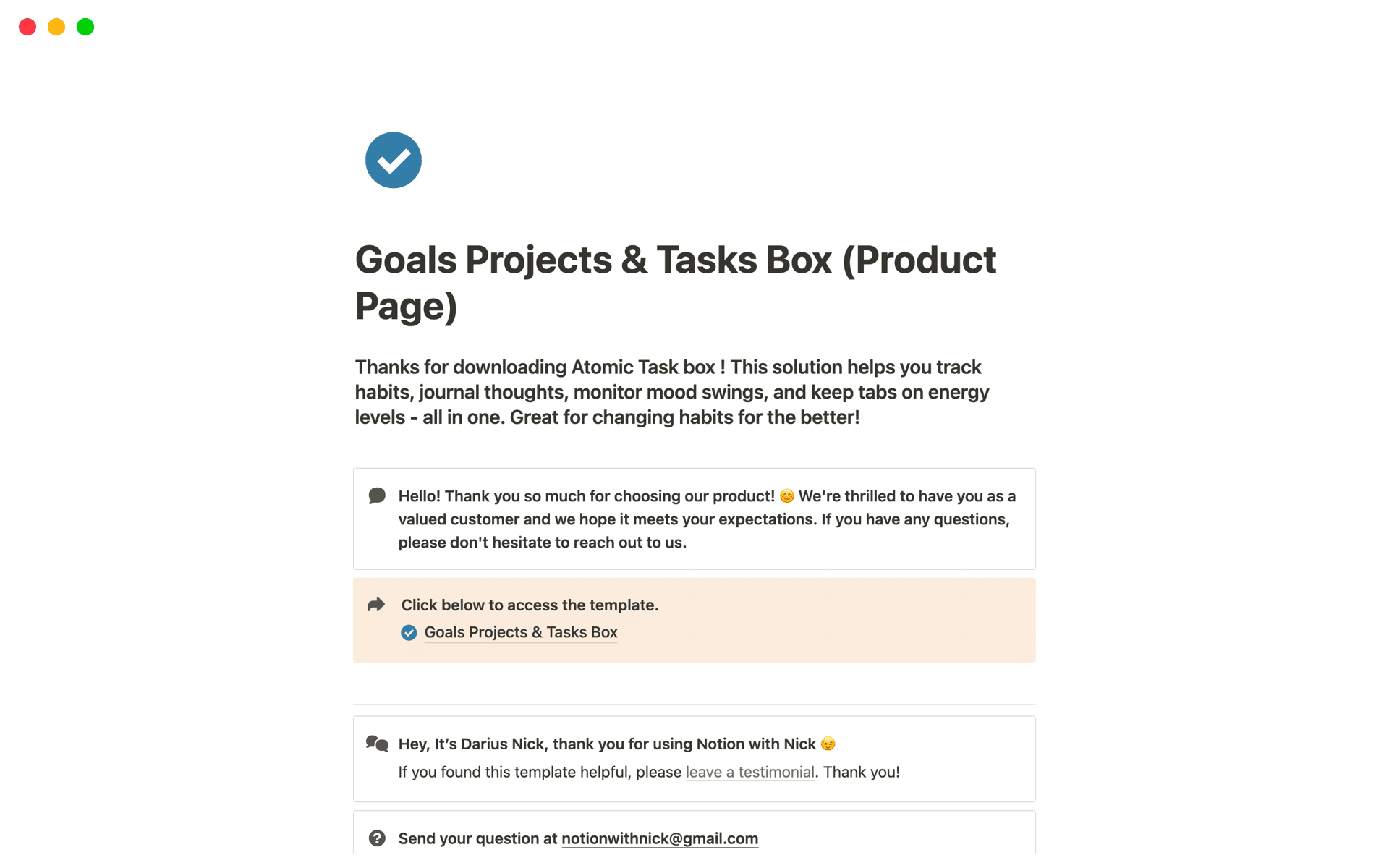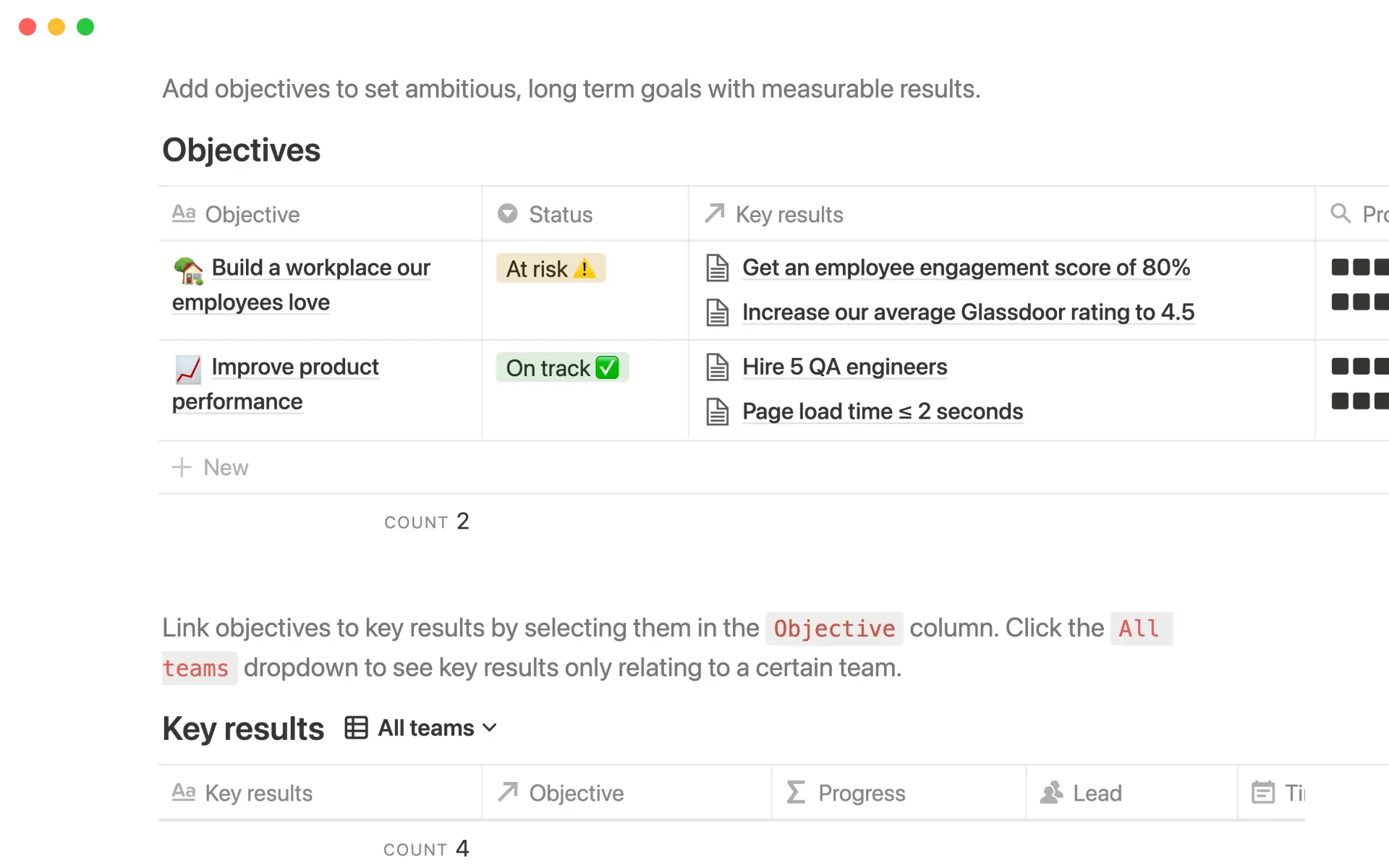You’ve hit a plateau at your dream job. While you have long-term objectives, like becoming team lead and then department head, you have no idea how to achieve them. You’re worried that if you wait around for a promotion nothing will happen, but you also don't want to forge ahead without a plan.
But there’s a third option: following strategic steps to goal setting to achieve your objectives.
What’s goal setting?
High-effort, complex goals like securing a promotion can seem out of reach and so far down the road that you have no idea how to get there. But following a goal-setting process helps you direct your efforts to achieve success.
Goal setting involves defining overall objectives and creating a well-informed action plan to reach them. You can then break these smaller goals into individual tasks and to-do lists, mapping them onto a timeline to help you understand what you must do daily to achieve them. If your long-term goal is to become team lead, for example, an intermediate goal might be to take on more responsibility and manage a working group or part of a project.

Why is goal setting important?
Goal setting is a powerful personal and professional development tool that should be part of your life-planning toolkit. Here are a few benefits of goal setting, along with some examples highlighting productivity in the workplace.
Offers clarity and focus
Setting goals helps you identify what you want and break down objectives into specific tasks so you don’t feel overwhelmed. You can also monitor progress and determine if you’re on track or putting your efforts in the wrong direction. As you define, break down, and track your goals, you gain clarity and focus regarding what you want and where you’re headed.
Let’s say your goal is to launch a new product within the next quarter. Goal setting helps you break this down into smaller tasks, like completing one mockup each week. These smaller items build up into bigger milestones, like testing a product feature every month. All of this works together to keep you well-informed regarding what you want and where you’re at in the process of gaining it.
Increases motivation
When you have a clear objective, you’re more likely to feel a sense of urgency to work toward that goal because you understand the purpose behind your hard work, which is how you can increase your productivity in the workplace. This is especially useful during times of adversity when it's easy to lose motivation, like when you’re burned out or pushing through a sprint.
It’s easy to keep up with tasks when things go smoothly at work. But what happens when projects and deadlines overwhelm you? During these more stressful times, having a set goal with specific to-dos each day or week encourages you to schedule your day to make time for your progress toward your long-term goals.
Promotes personal and professional growth
Setting and achieving goals helps you develop new skills and learn from your experiences. By challenging yourself to accomplish daunting tasks, you expand your horizons and enjoy improvements in all areas of your life. If, for instance, you decide to improve your public speaking skills and you put in the hard work toward this goal, you’ll become a more effective communicator in the workplace and gain the confidence to voice your opinions and advocate for yourself with friends and family.
Boosts confidence
Achieving goals, or making visible, continued progress toward them, can increase your self-esteem by providing incontrovertible evidence that you’re capable and accomplished. And if you’ve experienced failure or setbacks, goal setting is the perfect antidote for boosting your self-confidence. By working on a long-term goal through bite-size tasks, you demonstrate to yourself daily that you’ve got this.
Let’s say your goal is to create a team wiki. Completing the first draft of your docs and processes is a significant milestone that demonstrates both your commitment to seeing your plan through and your ability to do what you set your mind to. This affirmation of your capabilities increases your confidence, motivating you to continue forward.
Increases your accountability
Setting goals involves determining benchmarks, like comparable completed projects, and metrics, like skill proficiency checks, to see whether you’re on track. These benchmarks and metrics help you measure progress. If you stop working on daily tasks that contribute toward the overall success of your goal, you’ll quickly see that you’re falling behind. Goal setting encourages you to stay accountable, even when faced with distractions or obstacles.
Provides a sense of fulfillment and purpose
Goal setting gives you a sense of fulfillment and purpose since it allows you to be more intentional about your daily life. Your day-to-day actions no longer happen in isolation. Instead they’re part of a larger plan that builds on your personal values.

8 steps to goal setting
Goal setting isn’t tough, but it does require a structured process to distill your aspirations into an action plan. Here are eight key steps for effective goal setting.
1. Think about what you want to achieve
Brainstorm your personal and professional goals, considering what you want to achieve in both the short and long-term. To start, try asking yourself these questions:
What’s important to me, both personally and professionally?
What am I passionate about?
What changes do I want to make in my life?
2. Go SMART
One of the most popular goal-setting frameworks is the SMART approach — specific, measurable, attainable, relevant, and time-bound — which helps you set clear, actionable, and realistic goals. Instead of setting a general objective like "Get in shape," a SMART goal would be "Run a 5k race within six months." Because SMART goals are so specific, they’re easier to break down into actionable steps or milestones.
And if you’re wondering how to measure productivity toward workplace goals, a key part of the SMART goal-setting framework is determining key performance indicators (KPIs) to track your progress. All these benefits combine to increase your chance of success and reduce the likelihood of feeling overwhelmed or stuck.
3. Write down your goals
Don’t keep all this brainstorming in your head — outline your goals so you can see them in front of you and revise or reflect as needed. You can do this in a notebook, planner, or virtual workspace like Notion.
Keep in mind the SMART goal format when outlining your goals. Instead of saying, "I want to be professionally successful," be more specific by saying something like, "I want to gain a management position within the next two years." This way, you set yourself up to create an action plan toward that clear goal.
4. Create an action plan
Once you’ve established your goals, create a roadmap that outlines the work you have ahead of you to achieve your overarching objectives. Break each item into small, manageable steps you can accomplish without becoming overwhelmed. If your goal is to learn a new language, you could break it down into smaller steps like "Buy a language learning app," "Watch language learning videos," and "Practice chatting with a native speaker."
5. Set a timeline
Set a broad final deadline and specific due dates for each step in your action plan to help you stay on track. Be realistic about your timeline and what’s achievable in that window. If you’re new to running, don’t set a goal to run a marathon in a month. Instead, set yourself up for success by evaluating your abilities and available resources — including time. Running a marathon next year might be possible if you can hit milestones of five km after two months and a half marathon in six months, but during your first month, you might want to focus on just getting out to run three times a week.
6. Set your goals in motion
Take action and start working toward your goals. This involves changing your daily routine, learning new skills, and seeking relevant opportunities. Whatever it takes, make a commitment to yourself to move forward.
7. Check in on progress
An important part of goal setting is staying on track within a given time frame. In an earlier step, you determined success metrics. Use these to periodically assess your progress, considering whether you’re making the progress you expected and noting any obstacles getting in your way. Use these insights to adjust your action plan as needed to stay on track.
8. Review your goals
Set aside time to review your goals regularly as you use metrics to analyze your progress. This might be weekly, monthly, or quarterly. Reassess your action plan as necessary, and consider adding final deadlines. If you don’t reach your goals by these final-chance due dates, you should revise your goals.
Never lose track of your goals with Notion
Goal setting converts long-term aspirations into actionable items toward which you can make incremental progress. And since goal setting requires structure, what better way to start than with a productivity platform that offers organized workspaces and strategically-created templates?
Notion’s connected workspace is fully customizable for both your personal and professional goals. Begin with a goal-setting template and break down items into to-do lists and tasks. Then add these to a project roadmap or goal tracker to visualize how you’ll work toward your goals over time so you never lose track of your next steps again.






